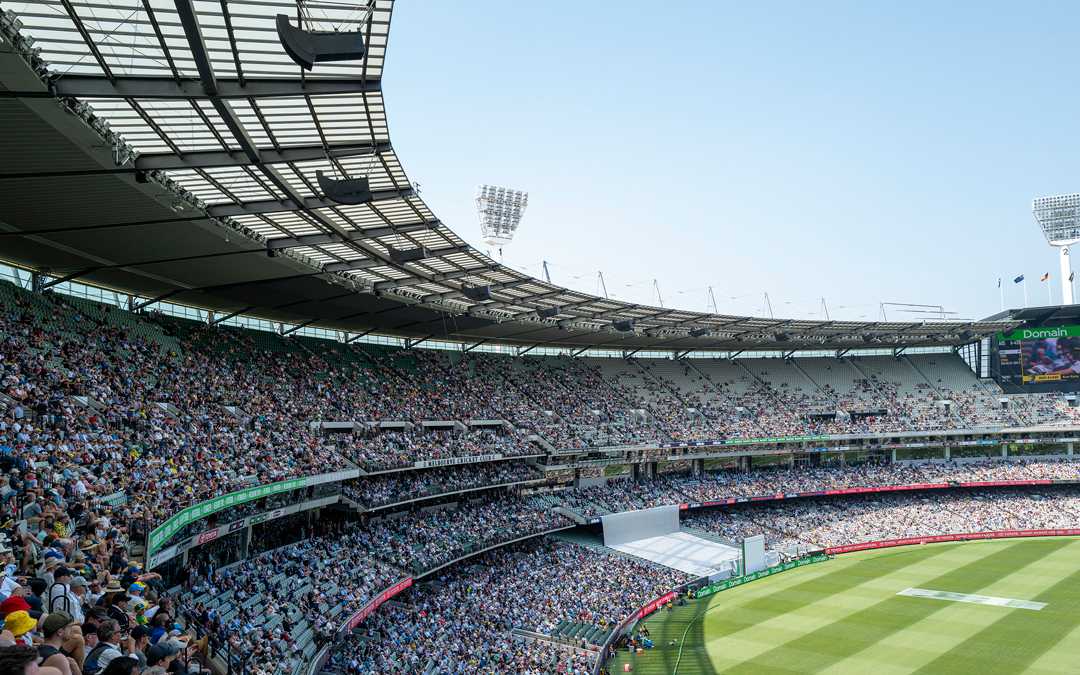Optocore at heart of MCG stadium upgrade
- Details

This included an AUD$25m contract for a new site-wide PA, transport and connectivity, masterminded by two eminent technology companies. Australian sound & AV consultants Auditoria conceived the system, and Diversified (who in 2019 acquired Rutledge AV in Australia) undertook the complex integration at the famous MCG (Melbourne Cricket Ground).
Premier pro audio brands, including fibre network specialists, Optocore, were vital to the implementation. To give an idea of scale, more than 3,000 speakers now populate the seating bowl, function rooms and VIP suites, atria, internal concourse areas and exit gates.
The existing PA system, installed 14 years earlier, no longer met audience expectations, hence informal conversations with Auditoria concerning a refit began. They were duly awarded the audio upgrade consultancy, whereupon Auditoria and the MCC released a tender for the integration of the new design, and Diversified provided the winning bid. Following a year-long project the installation was completed in time for the first Test Match on Boxing Day 2019.
Auditoria co-designers Scott Willsallen and Luis Miranda designed and engineered the systems and specified all componentry and connectivity, with the latter managing the project and being joined in the latter stages by Justin Arthur for the commissioning process. For Diversified, Daniel Woodward managed the project, with Matt Edgcumbe (project director), Paul Jamieson (engineer) and Victor Laubscher (field engineer).
The design uses two signal transport systems - one for DiGiCo and one for Q-SYS. The mixing system for the seating bowl comprises a DiGiCo SD9 with two 4REA4 mix engines. The local I/Os in the control room are connected to an SD Rack and the interface to the broadcast is via Optocore devices for MADI and AES-EBU connectivity. The additional I/O is provided by Optocore X6R-FX-16AE-SRC (AES/EBU) and DD4MR-FX (MADI) interfaces.
In addition, portable DiGiCo input frames can be deployed around the stadium for live entertainment, and in three locations around the stadium connection is back to the control room via a pair of Optocore AutoRouter 5 intelligent fibre patchbays. “The racks can be deployed as needed and connected to the local connection point,” states Willsallen. “The AutoRouter makes the link to the network and the racks appear on the console. It’s very flexible and easy to use.”
While the Q-SYS environment uses the proprietary Q-LAN networking over the stadium infrastructure, lack of MADI connectivity resulted in the designers turning to the Optocore solution. “This expanded the DiGiCo capacity and the Optocore network devices gave us huge scope for inputs and outputs that could easily be patched from the console with the final link to Q-SYS via dual redundant AES/EBU connections,” he summarised. The maximum 504 channels available on the DiGiCo / Optocore loop are all in use.
The DD4MR-FX also provides interconnectivity with the video screen systems for audio from video playback machines, as well as providing MADI connectivity for overlay systems.
“The inclusion of the Optocore devices allowed us to interface with the broadcasters video and audio system via MADI and AES. It also allowed us to expand the system and tie setup and operation into one streamlined system,” explained Woodward.
As for Optocore’s AutoRouter, this had only become available after the systems had been designed, and according to Daniel Woodward replaced the original patch bay for connectivity to the portable DiGiCo SD rack field locations. “It made sense to include the Optocore router to automate the switching, which has proved faultless and a lot more convenient so far.”
(Jim Evans)
















